History of Same-Sex Samurai Love in Edo Japan
While the LGBT+ community might not meet widespread acceptance in contemporary Japan, it seems that things used to be somewhat different in the Edo Period.
By Diletta FabianiWakashudo & Connection to Nanshoku
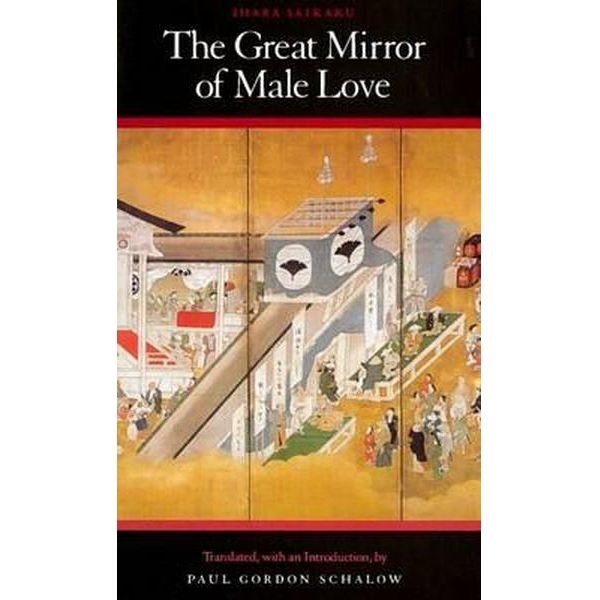
https://www.amazon.com/Great-Mirror-Male-Love/dp/0804718954
The Edo Period (also called the Tokugawa Era) spans from 1603 to 1868 and saw the emergence of popular figures that all lovers of Japanese culture know well: samurai, geisha, kabuki actors, etc. One keyword also emerged in this era: wakashudo (若衆道, sometimes abbreviated as shudo), which we can translate as “the way of the young.” Wakashudo came to indicate the tradition of homosexuality in Japan, spanning from the middle ages up to the Meiji Restoration. However, in order to understand wakashudo, we must take a step back and make a little detour to a concept born from Chinese Buddhism and then imported to Japan:
Nanshoku (男色, literally “male colors”)
While nanshoku (also pronounced danshoku) as a term has been used to refer to male homosexuality (for example in works like Nanshoku Okagami by Ihara Saikaku, translated into English as The Great Mirror of Male Love) between a older man and a young boy, the origin of the term is found in religion. Nanshoku was imported from China into Japan from monks who had studied Buddhism in China, and it referred to a relationship between two monks. In nanshoku, a younger, usually pre-pubescent, monk (called chigo) would come to be under the wing of an older monk (called nenja). When the chigo grew older, the nanshoku relationship between the two would end and the nenja would be free to look for a different acolyte.
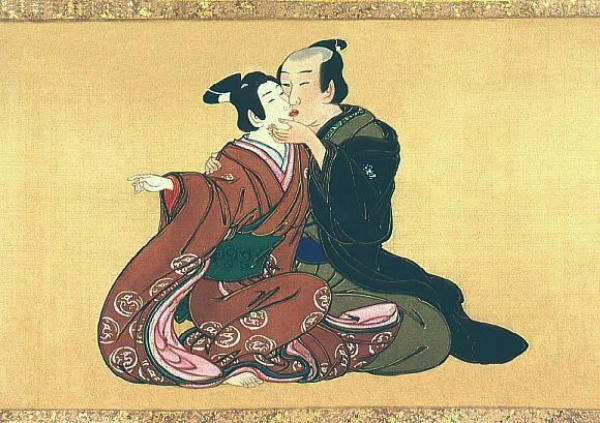
https://commons.wikimedia.org/wiki/File:Samurai_kiss.jpg
The relationship was both physical and psychological, as mentioned in Cartographies of Desire by Gregory M. Pflugfelder:
"(The shoku ideogram) literally meant 'color,' referring in Buddhist philosophy to the world of visually perceptible forms toward which lower beings, including humans, experienced desire, thus hindering their progress along the path of enlightenment. More specifically, it came to denote the real of erotic pleasure...The pleasure of this realm sprang neither from purely physiological processes, as the medico-scientific model of 'sexuality' suggests, nor from a lofty spiritual source, as the term 'love' often implies; instead, more akin to the Greek 'eros,' they partook equally of physical and emotional elements, both of which were understood to pose a similar degree of threat to the unenlightened soul."
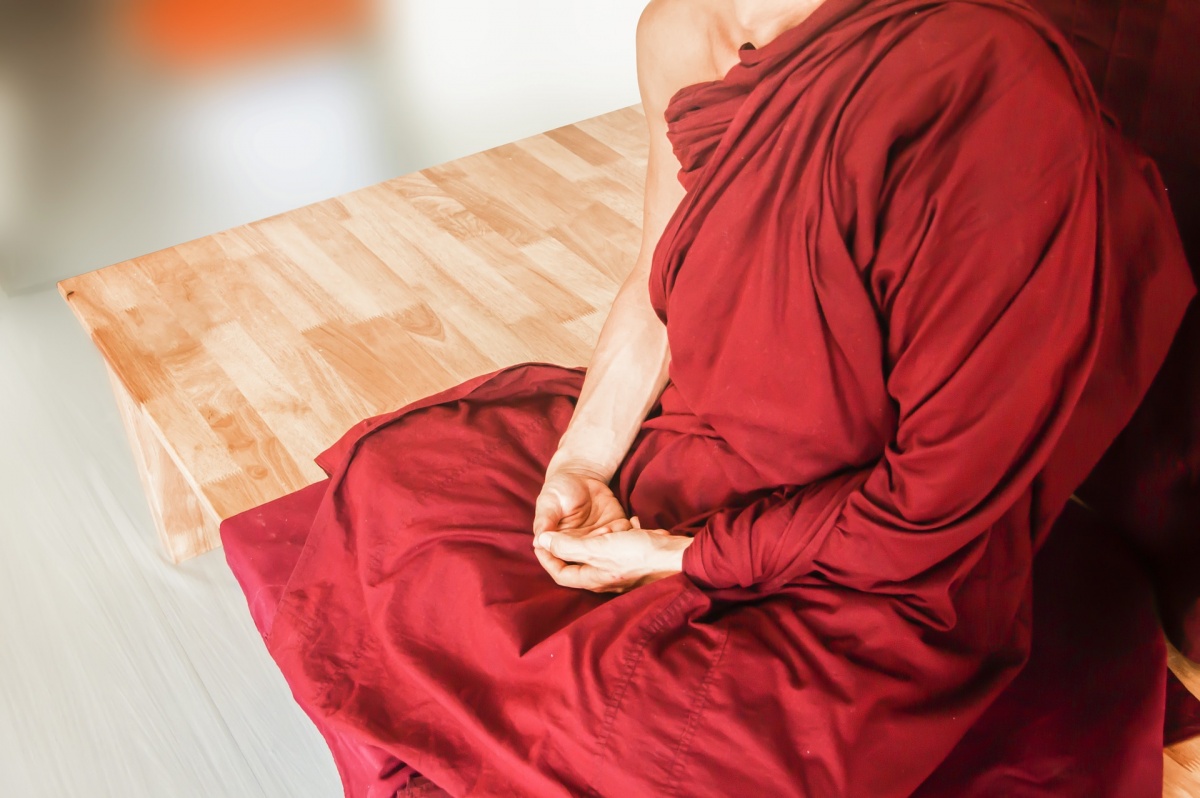
https://pixabay.com/photo-1810156/
If you’re surprised by the religious origin of nanshoku, you should remember that Buddhism and Shintoism differ from Christianity in terms of views on sexuality in general and homosexuality in particular. Homosexuality was relatively accepted in pre-Christian times in the Greek and Roman cultures, but with the spread of Christianity this changed: homosexuality became a sin, as sex was only seen as a means towards reproduction.
On the other hand, Shintoism, Japan’s first main religion, makes intercourse between two divinities the origin of the islands of Japan and sex is generally seen in a more positive light than in Christian religions. In Buddhism, while sex is seen as a misstep for monks and nuns on the way to enlightenment, there's still debate around homosexual sex being at the same level as heterosexual sex in terms of “pollution,” but it's usually never mentioned as worse.
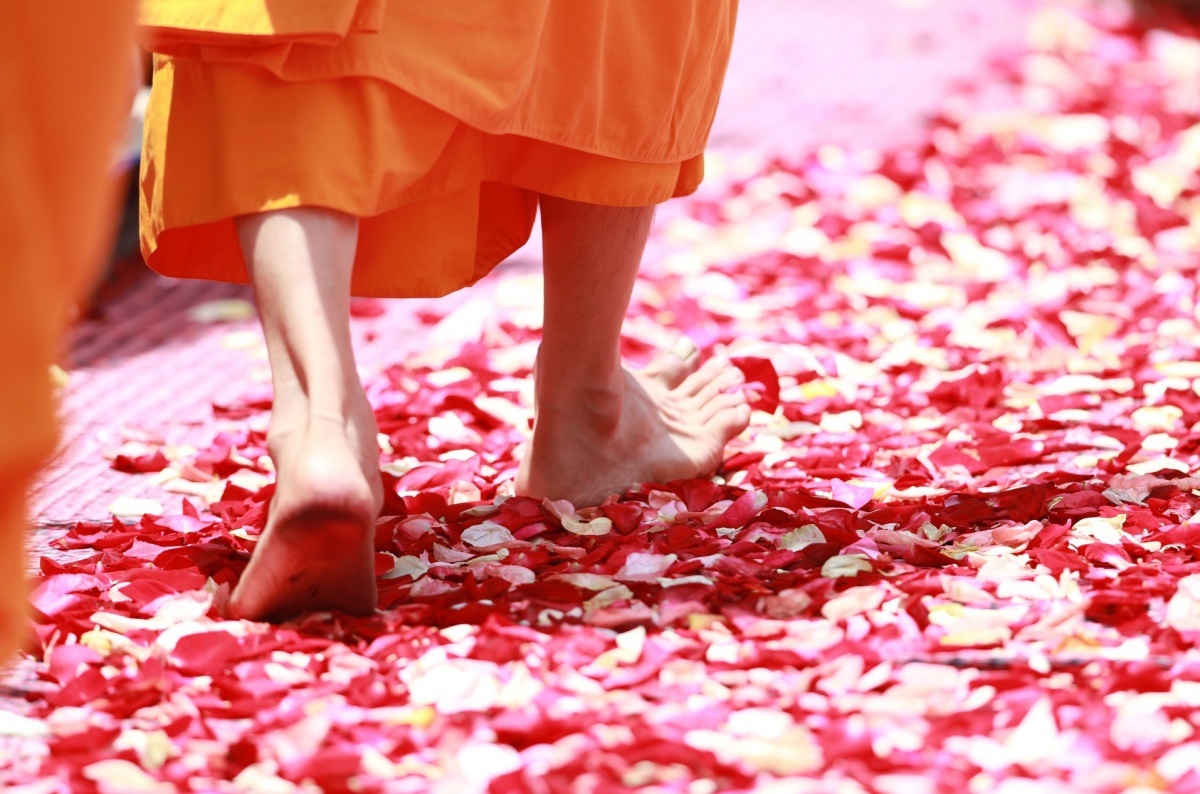
https://pixabay.com/photo-458491/
Dharmachari Jñanavira, author of Homosexuality in the Japanese Buddhist Tradition, states this difference:
“Sex did not occupy the same place in the mindscape of Japanese Buddhists as it did in Christian consciousness throughout the west. The result was a different kind of interiority, one which did not judge actions as inherently right or wrong but insisted, instead, upon their situationality and intentionality... Unlike in Christianity, where such lust would have been understood as a Satanic prompting, in Japan at this time, that an older man should fall in love with a younger was understood to be due to a positive karmic bond between the two. The key concept here is nasake, or ‘sympathy,’ an important term in Japanese ethics as well as aesthetics. A youth who recognizes the sincerity of an older man’s feelings and who, out of sympathy, responds to him irrespective of the man’s status or of any benefit he might expect to gain from the liaison, is considered exemplary."
He also states that the homoerotic relationship was supposed to last only until the chigo reached adulthood. In this way, such relationship would acquire a metaphysical meaning, connected to the knowledge of the “temporality of the affair” and of the unavoidable fading of beauty.

http://housedenali.wikispaces.com/tokugawa+period+economy+and+society
It’s important to keep in mind the Buddhist origin of nanshoku, as most samurai were educated on the basis of Buddhist principles—often in monasteries. Given the life situation of samurai, it was relatively easy for nanshoku to transfer and be adapted to their world in the form of wakashudo.
One point favoring nanshoku was the absence of women. During war periods, samurai would be out on the road fighting without many women in sight. Even with the peace of the 1600s, samurai tended to be concentrated in castle cities, where the opposite sex was a rare sight.
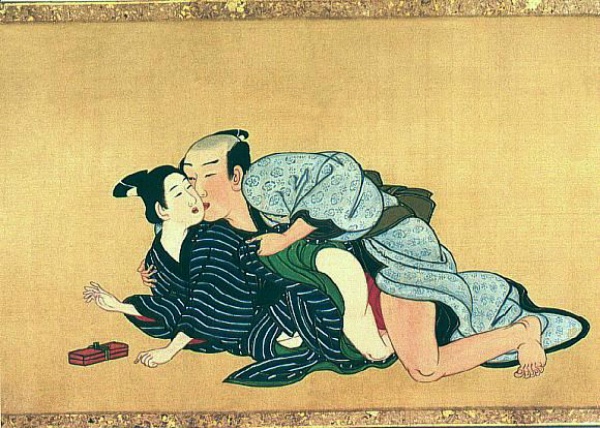
https://it.wikipedia.org/wiki/Miyagawa_Issh%C5%8D#/media/File:Miyagawa_Issh%C3%B4-Spring_Pastimes-C.jpg
A second point was that nanshoku went along very well with some of the concepts and ideals of the samurai life. In a very strict hierarchical world, where younger members would obey and serve older members while being educated and supported in exchange, a relationship between an older samurai and a young samurai would instantly appear advantageous to both. The younger samurai would receive education and abide by the centuries-old values of respect to the elderly and feudal deference, while the older samurai would receive unquestionable loyalty (also in honor-related quests, like duels and fights)… and some other extra favors.
The Edo Period thus became the golden era of wakashudo, with many famous literary works dedicated to it. One very famous example is the Denbu Monogatari (Story of a Boor), in which men—while bathing in a river—debate about which one is better, men's love or women's love. Another example would be the aforementioned The Great Mirror of Male Love, a collection of short stories focused on male relationships among older men and younger boys. The stories in the book are divided into two categories: love stories between warrior and monks followed by kabuki-related stories.
In fact, with the pacification of Japan, kabuki became the next avenue for the spread of wakashudo.





